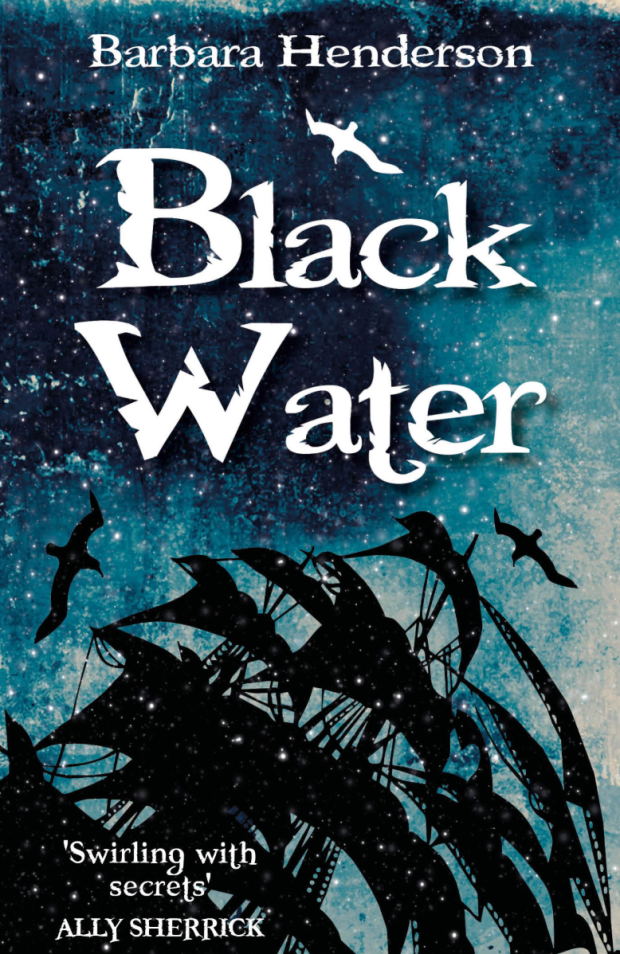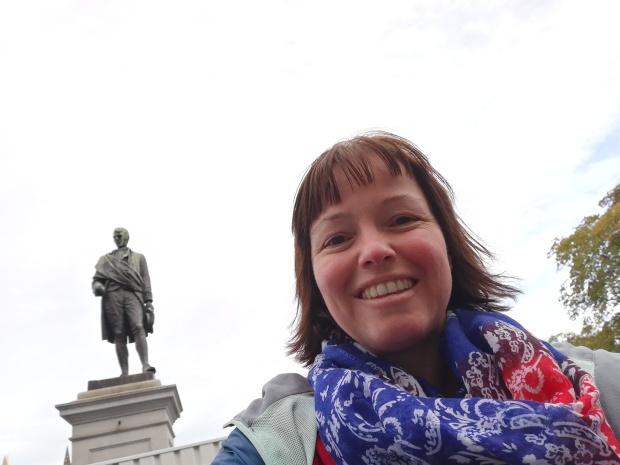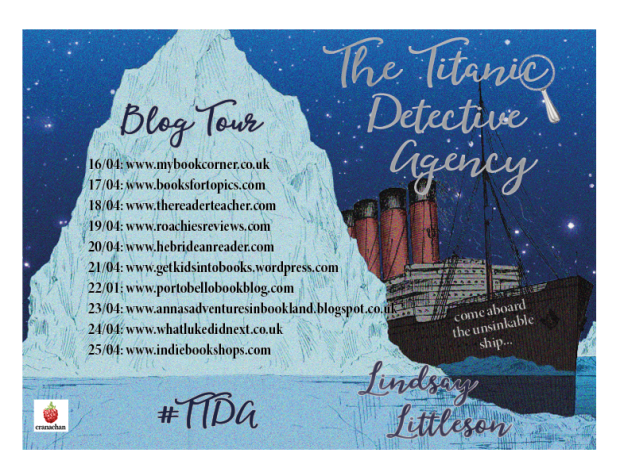
‘Exquisite writing… every word is used for effect. This story is not only one of legend and lore, but one of pulsating action and adventure eagerly awaiting its readers.’
Rating: ⭐⭐⭐⭐⭐
Title: Black Water
Author: Barbara Henderson (@scattyscribbler)
Publisher: Cranachan (@cranachanbooks)
Page count: 88
Date of publication: 31st October 2019
Series status: N/A
ISBN: 978-1911279624
Perfect for Year 5, Year 6 and Year 7.
#3Words3Emojis:
1. Smuggling 🛢️
2. Poetry ✍️
3. Father-son 👨👦
Down by the coast, black water swirls and hides its secrets…
Dumfries, 1792.
Henry may only be thirteen, but he has already begun his training in the Excise, combatting smuggling like his father does. But when a large, smuggling schooner is stranded nearby, the stakes are high – even with reinforcements, and the newly recruited officer, a poet called Robert Burns.
Musket fire, obstructive locals, quicksand and cannonballs – it is a mission of survival. As it turns out: Henry has a crucial part to play…
Review:
Historical fiction and short stories, for me, are rather something of hidden gems in the children’s literature world. There’s such a dearth of both quantity and quality in the two genres that when I see a book that is set especially in a time period which has not been written about in detail before, I am thrilled and this is exactly how I felt when I cast my eyes over Black Water to see it satisfying both these untapped criteria.
As teenager Henry Lewars finds himself out at sea and hiding in the shadows of his father, he finds too that he has a lot to learn in following in his father’s footsteps and getting the hang of working for the Excise. It’s 1792, in the early hours of the morning and Henry, his father and their fellow officers are floating on the Solway Firth, determined to chase and catch the oncoming smugglers and their contraband whom are looming large. As they bring their captives and evidence ashore, it seems that Henry has, according to his father, done ‘tolerably well’ in one of his first missions.
But all is not quiet in the Firth for long… as news of an even larger ship – a schooner by the name of the Rosamund – has been spotted. As Henry and his father depart to take down these tax evaders on the orders of Riding Officer, Mr Walter Crawford, they realise however that they may need more reinforcements. One of them, a very famous one who is more known for his poetry (some of which is featured within Black Water) than his involvement as an Exciseman: Robert Burns.
Will Henry survive? Will he not only learn how to work for the Excise but finally earn the respect of his father? How does the bard help in their quest to board the Rosamund? And who is Old Finlay… a character who from the start holds more than a mystery about him?
With musket fire, cannon fire, bribery, quicksand, a race against the tide and battle-hardened sailors, this story is not only one of legend and lore, but one of pulsating action and adventure eagerly awaiting its readers. Barbara’s level of research is second-to-none and from reading her author’s note, a brief history of smuggling in Scotland and extracts from Crawford’s journal and Burns’ poetry itself, you can see how every word is used exquisitely for full effect and so proves that good things come in small packages.
Burns and me, we have history
by Barbara Henderson

I have a terrible admission to make. Until I was 19 years old, I had never ever heard of Robert Burns.
I’m not kidding. Having grown up in Germany, I could recite Goethe and Schiller and had read a smattering of the German classics. I had covered some Shakespeare in English lesons at school, but Scots? My teachers would have run a mile! It was their job to produce an accent akin to BBC presenters in the 60s, crystal clear and a little old fashioned. Any deviation from this was frowned upon and avoided at all cost.
Imagine my surprise when I arrived at Edinburgh University to study English Literature and, in a moment of madness, signed up to do Scottish Lit instead (the two were interchangeable and I fancied learning something new). I came to regret it – fluent in English, I was an absolute beginner when it came to Scots words – and Burns used quite a few of those! I bought a trusty second-hand copy of his works and set to work. It didn’t take long before there was a connection – I took to the romanticist element in his work (I had loved the same in Goethe) and there was something phonetically truthful in these words. Here was a poet who was making a point, taking a risk: deliberately including the language of ordinary people in literature. Here was someone deeply flawed, but at the same time drawn to goodness and virtue. Someone who believed in an egalitarian society before we were anywhere approaching that – and we still have some way to go! Someone who wrote poetry about mice and lice, all the way commenting on society as he saw it. One of my favourites is Holy Willie’s Prayer – exposing religious hypocrisy in a humorous way, digging at double standards.
Traditional Burns’ Suppers became a January fixture in our house (and our best friends got together at one of those!).
It’s always an occasion, and a joyous one at that. What’s not to love? Whenever in Edinburgh, I still pop into the Writers’ Museum to have my wee fix of Burns, Stevenson and Scott. One year I even persuaded the family that we really, really wanted to holiday in Dumfries – I was interested in visiting the place where he had lived. It hadn’t occurred to me that the poet would feature in one of my stories until I found out about the incredible events surrounding the seizure of the Rosamund, the real events that underpin Black Water. How on earth has no-one written for kids about this? It is a gift! It features the poet, but in his day job as an Exciseman which he took on as he needed a reliable income – but it is clear that his heart was in his poetry. This posed an interesting idea for me: What would he be like? How would he treat a child? Would he be likeable? I decided that yes, flawed as he was, he would have been likeable! He was passionate about his art, and that is as appealing today as I’m sure it was then.
It seems that, nearly 30 years after I first encountered him, I’m still a little charmed by the bard.
Big thanks to Barbara and all the team at Cranachan for inviting me to be a part of the Black Water blog tour and for sending me an advance copy.
Extra thanks to Barbara for writing such an insightful guest post!
Mr E

Be sure to check out the rest of the Black Water blog tour for more exclusive content & reviews from these brilliant book bloggers!



